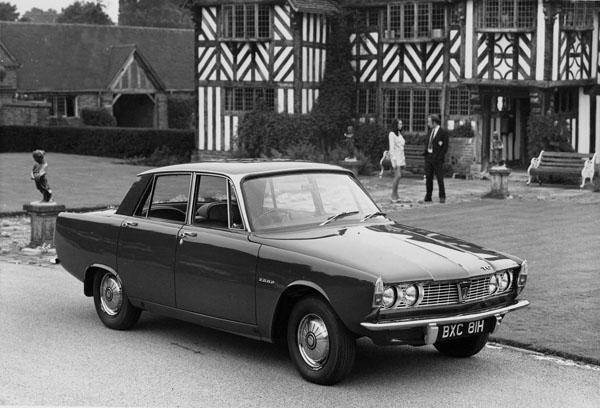
Besides its highly successful Land Rover, the Rover company was well known after World War II for building a range of medium-sized and larger quality cars. With the coming of the 1960s, however, Rover needed a new image if it was to maintain its position as a car manufacturer in a more competitive world. Rover’s engineers realised it was no good trying to modify the existing medium-sized cars in their range as these cars dated back to the 1940s, looked totally outdated and were above all, extremely heavy. Even the engines in these cars were peculiar units with one side and one overhead valve.
What was needed was something new and exciting, with a sense of adventure. When finally introduced the Rover 2000 became the leader of a whole new generation of cars. To achieve this, the brave decision was taken to design a car completely new in every detail.
The engine design chosen was a four-cylinder one which was fitted with an overhead camshaft and had a capacity of 2.00 litres with exactly square dimensions, that is the crankshaft stroke was exactly the same as the cylinder bore. This engine developed 67kW, and the drive from the engine was taken through a conventional clutch and four-speed gearbox to a differential at the centre of a de Dion rear suspension system.
One of the most interesting parts of the Rover 2000 design was its unusual body construction. Whilst it was built up in unitary fashion, rather than being the usual complete body shell, instead a ‘skeleton’ only was formed to which unstressed body panels were then attached. Such a system offered several advantages.
The Rover was certainly very strong and safe and it was easy to detach and replace the surface panels after a minor accident. It would also have been easier to restyle the car by changing the surface panels without having to worry about the skeleton beneath. However in 13 years of production, the shape of the Rover 2000 never noticeably changed! One disadvantage of this system was that it made the car heavier than it needed otherwise to have been.
The suspension system was also unusual. At the front, the independent mechanism was arranged with its upper arms feeding loads directly aft into the bulkhead of the structural skeleton. At the rear, the car used a system first invented by the Count de Dion. The Count’s invention, despite being expensive to engineer, managed to combine the best features of the axle by keeping the wheels parallel at all times, and of independent suspension. Rover’s de Dion system was itself unusual in certain details but it worked well, and the 2000 gained a good reputation for willing and safe cornering.
The 2000 was given disc brakes all round and the car was designed to use the new radial-ply tyres. The Rover 2000 became a firm favourite, sold well and remained in production for well over a decade. It became much smarter, and more socially acceptable, to drive the Rover 2000 – or its rival the Triumph 2000 which emerged within weeks of the Rover – than to own one of the traditional big 3.00-litre saloons.








